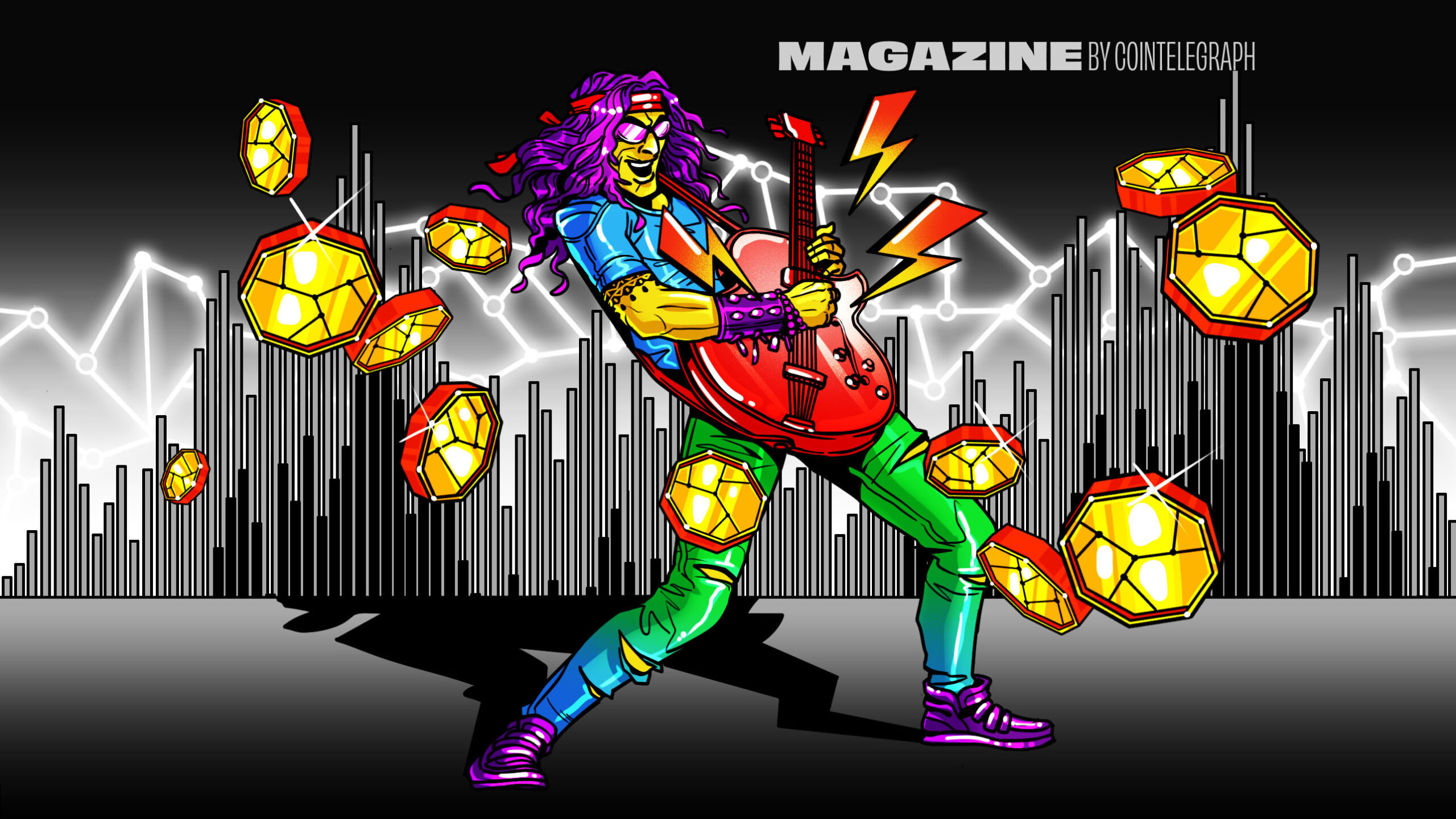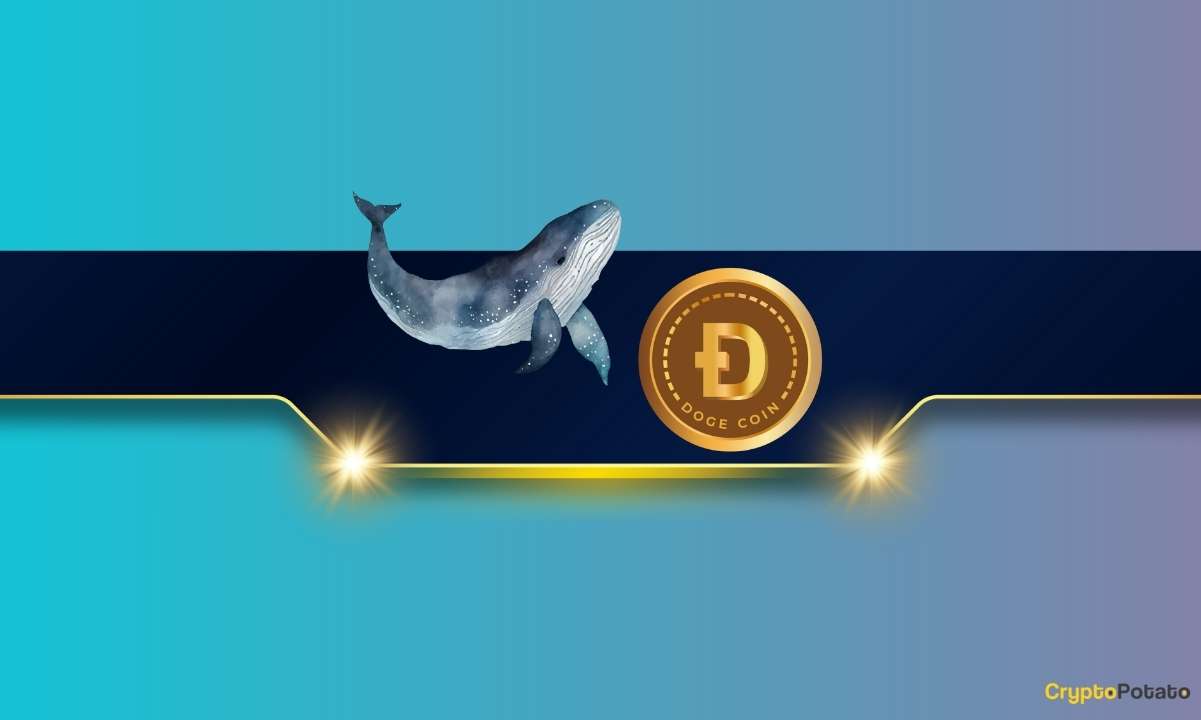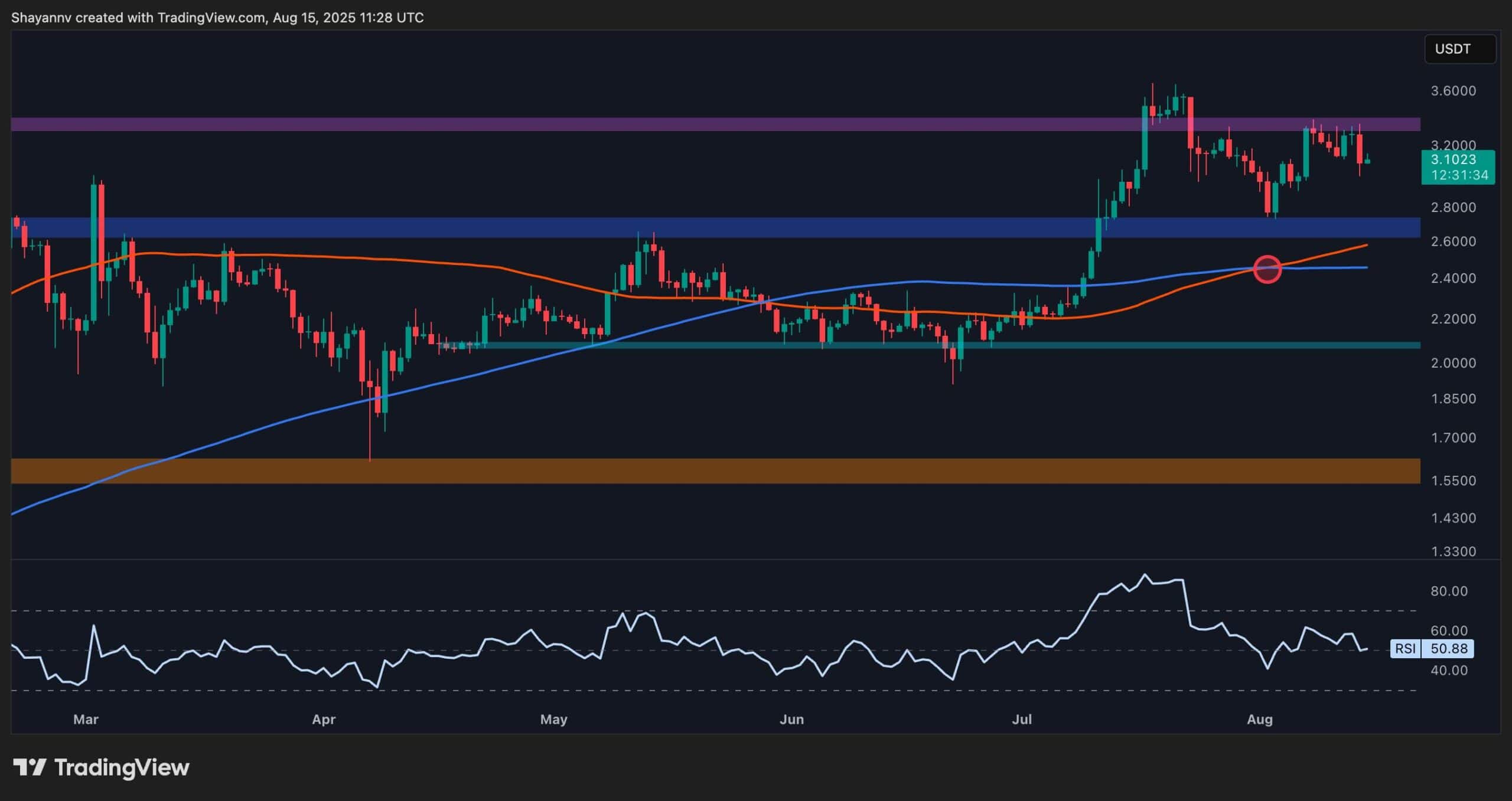Cryptocurrency
Tokenizing music royalties as NFTs could help the next Taylor Swift

Since 2021, pop superstar Taylor Swift has been rerecording and releasing her entire back catalog of albums in an effort to break away from her previous record label and gain greater control over her art.
The fact she has to go through such a painstaking, expensive process just to recover what most would consider rightfully hers highlights how the music industry can be a complicated, confusing place for young artists. It has a well-deserved reputation for being a space where enthusiastic musicians often unknowingly enter into unfavorable or exploitative record contracts.
“I would say maybe 10% of musicians have a good understanding, 1% of musicians have a great understanding, and 0.1% of musicians have an amazing understanding” of the legal and financial structure behind the music industry, Justin Blau tells Magazine. Also known as 3lau, Blau is a popular DJ and the founder of Royal, one of a handful of companies working to bridge the divide between the traditional music industry and blockchain.
Web3 or blockchain is often hyped up as the “Promised Land” for musicians, where the music industry will be democratized and decentralized, and where musicians will earn a larger slice of the profit pie by connecting directly with fans through NFTs.
One rising use case for “music NFTs” is tokenizing a song’s royalties, allowing fans to earn a percentage of the revenue generated by their favorite artists’ music.
But music copyright law and royalty collection are highly complicated, and very much off-chain. So, where exactly does blockchain fit in, and what do artists and fans gain from its introduction?
A complicated starting point
To start with the very basics, each piece of recorded music has two copyrights associated with it: One represents the recording itself, while the other represents the underlying composition — the written lyrics and music.
Depending on how many people and companies are involved in writing and releasing a song, any one track can have multiple rights holders. Musicians who release music through record labels are often required to sign over the master recording rights to the label.

Each copyright also generates its own associated royalties based on whether the song was played on the radio, listened to on Spotify, featured in a movie, etc. On top of that, different organizations are responsible for collecting each type of royalty.
With all that, it’s easy to see why the average artist may not fully grasp the business side of the music industry when entering into a recording contract that benefits their label more than them.

“Very few people really begin understanding the business of music and how it works, let alone the legal part of it,” Renata Lowenbraun, an attorney and CEO of Infanity — a Web3 platform for independent music artists and their communities — tells Magazine.
“The more informed you are as a recording artist or as a songwriter, the better off you are.”
Read also
Putting royalties on the blockchain
There are three main companies working on tokenizing traditional music royalty streams — Blau’s Royal, Anotherblock and Bolero — and they all follow the same basic premise.
A song’s rights holders divest a certain percentage of their royalties, and those royalty rights are fractionalized as NFTs. Tokenholders receive regular payouts to their crypto wallets in USDC in proportion to their share of the rights. If they wish to sell their NFTs, they can do so on the company’s website or secondary markets like OpenSea.

The core focus of Royal is streaming, and the platform has already worked with several high-profile musicians, including Nas and The Chainsmokers. Blau tells Magazine that streaming is “where most of the income comes from,” and that since fans can directly impact how often a song is streamed, “it makes the most sense to give fans the ownership in something that they actually can affect the success of.”
Royal’s NFTs live on Polygon and can be stored either in a custodial wallet managed by Royal or self-custodied using a wallet like MetaMask.

Anotherblock — which has worked with musicians like The Weeknd and R3hab — also focuses on streaming royalties and uses Ethereum. Investors can buy the NFTs with ETH using a self-custodial wallet or through the third-party wallet service Paper.
With all three platforms, the original rights holders retain ownership of the copyright itself — all they give up is a share of the royalties. Anotherblock CEO Filip Strömsten tells Magazine, “We think that the creators are the ones that have made the track, and they should be able to decide where their music is and how their music is being listened to.”

Bolero is a more recent entrant to the business of putting royalties on the blockchain, launching the Polygon-based “Song Shares” in February. It has worked with musicians like Agoria and Yemi Alade.
While Royal and Anotherblock fractionalize just one of the royalty streams generated by a song’s master recording, Bolero focuses on the master recording itself and its underlying IP.
As a result, NFT holders are entitled to a percentage of the royalties generated by multiple exploitations of the master recording, including physical sales, digital sales and sync placements (when a song is used in a movie, TV show, etc) in addition to streams.
“This is what we are trying to tackle here,” William Bailey, Bolero’s co-founder and CEO, tells Magazine.
“We are taking IP, we are fractionalizing, and thanks to this, we are able to offer multiple revenue sources.”
Keeping the artists at the center
Many builders in the Web3 music space are motivated by their own negative experiences in the business.
Blau, who continues to release music and tour, says he wants to help musicians better understand the industry, know the true value of their music, and ultimately, retain more ownership. “Everyone’s heard the saying ‘artists don’t get paid for music,’” he says. “That’s true a lot of the time. But the statement ‘music doesn’t make money’ is not true.”

Anotherblock’s Strömsten is also a musician, and his negative experience signing a recording contract at 18 later inspired him to co-found the company so that artists could sell their catalogs directly to fans instead of giving them away for virtually free to record labels.
“We want to emotionally and financially connect the consumers of music with the creators of music,” he states. “If you actually own something, then you are probably willing to pay more, and you’re probably willing to support that creator more.”

With a traditional recording contract, the label acts as a bank, giving artists cash advances and fronting the money to record their albums. But there’s a massive catch: The label wants that money back, and the artist is technically in debt until the label recoups its investment.
For Bolero’s Bailey, selling a part of one’s music catalog directly to fans is a way to get money upfront but not be indebted to a record label. “Instead of taking an advance that will be really difficult to recoup, […] maybe you can simply share or sell a little piece of it.” He adds:
“Thanks to Web3, I can access a liquid market to trade my IP without losing creative control.”

And when collectors decide to sell their tokens on secondary markets, artists can continue to profit from each sale. So while artists give up some of their future music industry royalties, they gain access to a different set of blockchain royalties generated from the secondary sales of their NFTs — assuming traders sell them on markets with this feature enabled.
Read also
What’s in it for the fans?
So, what do fans gain from musicians tokenizing their royalties? The most obvious answer is that they can more directly support their favorite artists and get some “skin in the game.” The better a song performs, the more money fans can potentially make.
Purchasing music catalogs has historically been limited to a select few major institutional funds and record labels with deep pockets. But through fractionalization, “the average Joe can actually access music rights,” argues Strömsten.

Music catalogs for major artists are generally recognized as stable assets with reliable, lucrative returns for investors. Strömsten reports that Anotherblock’s recent royalty payouts saw “approximately 9% annualized dividend yields, which is much better than the stock market is performing, especially now.”
“You buy a catalog, and if the economics are right, you’re going to have royalties coming in in the future,” adds Infanity’s Lowenbraun. She also points to the collectible nature of the NFTs themselves — fans have a blockchain-based memento proving they are long-time supporters of an artist.

“Think about the bragging rights you can have, right? ‘Hey, I was an earlier supporter. I was into this in this person before anybody, before he blew up.’ But you can really prove that now.”
This aspect has also been embraced by platforms such as Sound, which recently raised $20 million in a Series A funding round that included the participation of rapper and crypto connoisseur Snoop Dogg. Projects like Sound and Infanity let artists mint limited-edition music NFTs tied to new music releases, allowing fans to directly support them in exchange for perks like exclusive meet-and-greets and VIP concert tickets.
Bolero’s Song Shares include a clause where artists can buy back the IP they divested to collectors at the current secondary market price. If the tokens have increased in value, fans make a profit.
For Bailey, this ensures fans are properly compensated in the event an artist gains greater success and wants to pursue other lucrative deals.
“The fans and the investors who are actually acquiring these pieces of catalogs, they are not lost in the process.”
Blockchain, meet the real world
For all of the promises of Web3, the traditional music industry remains very much off-chain. As Royal’s Blau puts it, “It’s impossible to expect the world to just flip a switch and move everything on the blockchain.” This effectively means that there is only partial decentralization, with these platforms acting as trusted intermediaries, collecting revenue from centralized off-chain sources before moving it on-chain.
This irony isn’t lost on Strömsten, who tells Magazine: “I would say that is probably the biggest challenge. If you want to have a decentralized music industry to begin with, then anyone who listens to music has to do that on-chain, right? So, the royalties have to start on-chain in order for it to be completely trustless and completely decentralized in that way. And it’s pretty improbable, in my view, that in the short term that is going to happen.”

Then there is the regulatory and legal ambiguity around crypto and NFTs, especially in the United States, which is the largest market for recorded music and home to the “Big Three” major record labels — Universal Music Group, Sony Music Entertainment and Warner Music Group. (UMG is legally headquartered in the Netherlands but maintains its operational headquarters in California). For example, the question of whether NFTs can be considered securities in the U.S. is still up in the air.
“The law, in general, always lags behind new technology because new technology just moves a lot quicker,” attorney Lowenbraun states. “Over time, the courts will slowly get used to this new technology and come up with ways of crafting the law, or rather to use existing principles to figure out what the heck things mean in Web3. I have full confidence in that.”
She adds that while linking royalties to NFTs is an exciting idea, builders must tread carefully. “For anybody working in it now, it just means you’ve got to make some logical best guesstimates based on where existing law is now on where it should be going.”
“It’s still a little iffy depending on how you offer what you’re offering.”
The future is on-chain — potentially

The Promised Land may still be some way — with no easy path to get there. It would require music rights to be stored on-chain and royalties to be paid on-chain, both of which are technologically possible but don’t seem to be an immediate priority of anyone in the traditional industry.
Many traditional music industry players have little interest in shaking up the current model, as its complex and confusing nature ultimately benefits them and their ability to make money at the expense of artists. As Bailey says, “They are making their bread and butter because it is complicated, you know?”

But true believers still think we’ll make it. Ljungberg believes that “in a couple of years, it’s not unlikely, in my view at least, that Spotify will pay out royalties directly on-chain and get distributed automatically to all the parties that are involved since that’s a lot more efficient way of doing it.”
According to Blau, it’s just a matter of patience:
“People don’t understand it yet. Any nascent technology just takes time to reduce friction.”
Subscribe
The most engaging reads in blockchain. Delivered once a
week.

Cryptocurrency
Ethereum Foundation, Whales, and Hackers: What’s Driving the ETH Sell-Off?

TL;DR
- Whales, hackers, and the Ethereum Foundation wallets moved over $500M in ETH through large sales and withdrawals.
- Ethereum transfers rose to 4.6M ETH, nearing the monthly high of 5.2M recorded in July.
- Staking inflows hit 247,900 ETH, the highest in a month, locking more supply from trading.
Large Withdrawals and Whale Activity
Ethereum (ETH) has seen heavy movement from major wallets over the past few days. On-chain data from Lookonchain shows a newly created wallet pulled 17,591 ETH, worth $81.62 million, from Kraken in just two hours.
Over three days, two new wallets withdrew a combined 71,025 ETH, valued at $330 million, from the exchange.
One of these wallets, address 0x2A92, has withdrawn 53,434 ETH, worth $242.34 million, in two days. This includes a recent purchase of 30,069 ETH, valued at $138.46 million, during a market drop.
Major ETH Holders Offload Millions Amid Price Rally
In contrast, several separate entities have been disposing of some ETH holdings. A wallet tied to a hacker address 0x17E0 sold 4,958 ETH for $22.13 million at $4,463, securing a profit of $9.75 million. Earlier this year, the same address sold 12,282 ETH at $1,932 and later bought back part of the amount at higher prices.
A different whale sold 20,600 ETH for $96.55 million over the past two days, generating a profit of more than $26 million after holding the position for nine months.
Meanwhile, an Ethereum Foundation-linked wallet, 0xF39d, sold 6,194 ETH worth $28.36 million in the last three days at an average price of $4,578.
Recent sales from the same wallet included an additional 1,100 ETH and 1,695 ETH for over $12.7 million combined.
The #EthereumFoundation-linked wallet(0xF39d) sold another 1,300 $ETH($5.87M) at $4,518 ~11 hours ago.
Over the past 3 days, this wallet has sold a total of 6,194 $ETH($28.36M) at an average price of $4,578.https://t.co/4hfCWymHVG pic.twitter.com/ErUyEY8SJy
— Lookonchain (@lookonchain) August 15, 2025
Network Activity on the Rise
CryptoQuant data shows Ethereum’s total tokens transferred have been climbing since August 9. After ranging between 1 million and 3 million ETH through late July and early August, transfers have risen to 4.6 million ETH, approaching the monthly high of 5.2 million recorded in mid-July. This increase has occurred alongside a price rally from about $3,400 to $4,600.
Interestingly, staking inflows generally stayed between 20,000 and 80,000 ETH per day over the past month. On August 14, inflows jumped to 247,900 ETH, the highest in the period.
At the time, ETH was trading near $4,600. Large staking deposits reduce the amount of ETH available for immediate trading, as staked coins are locked for a set period.
In the meantime, ETH trades at $4,647 with a 24-hour volume of $68.25 billion, down 2% on the day but up 19% over the week.
Binance Free $600 (CryptoPotato Exclusive): Use this link to register a new account and receive $600 exclusive welcome offer on Binance (full details).
LIMITED OFFER for CryptoPotato readers at Bybit: Use this link to register and open a $500 FREE position on any coin!
Cryptocurrency
Massive DOGE Whale Activity Hints at $1 Breakout

TL;DR
- Whales bought two billion DOGE this week, lifting their combined holdings to 27.6 billion coins.
- A single 900M DOGE transfer worth $208M to Binance drew attention to large exchange movements.
- DOGE broke key resistance, with momentum building for a possible push toward the $1 price mark.
Price and Market Moves
Dogecoin (DOGE) traded at $0.23 at press time, slipping 4% over the past day but still showing a 2% gain for the week. Daily turnover came in at about $6.18 billion.
Meanwhile, the broader crypto market saw over $1 billion in liquidations. Hotter-than-expected US Producer Price Index data pushed traders to scale back expectations of a near-term Federal Reserve rate cut. DOGE had roughly 290,500 coins liquidated during the sell-off.
On the two-week chart, analyst Trader Tardigrade notes that DOGE has cleared a downward-sloping resistance line after completing what appears to be a “wave V” in an Elliott Wave sequence. Similar setups in the past, where prolonged declines stayed within falling channels before breaking higher, have been followed by sharp rallies.
$Doge/2-week#Dogecoin is gaining strong momentum to surge above $1 pic.twitter.com/TuSEKr19nv
— Trader Tardigrade (@TATrader_Alan) August 15, 2025
Momentum gauges are also turning up. The Stochastic RSI, which had dropped into oversold territory, is now heading higher. Previous reversals from this zone have coincided with sustained upward moves. The current formation points to a possible run that could carry DOGE past the $1 mark.
Heavy Whale Buying and Large Transfers
As reported by CryptoPotato, blockchain data shows large investors have added two billion DOGE in the past week, spending just under $500 million. That brings their holdings to about 27.6 billion coins, or 18% of the supply. The buying streak has prompted speculation within the community.
Recently, Whale Alert flagged a 900 million DOGE transfer worth about $208 million into Binance. The tracking indicates that it originated from a wallet connected to the exchange, likely as an internal activity. The address involved holds 2.88 billion DOGE, one of the largest balances on the network.
Ali Martinez also reports that transactions above $1 million reached a one-month high, with activity building since early August and peaking as DOGE traded at $0.25.
Whales are back! Dogecoin $DOGE activity at a 1-month high. pic.twitter.com/C83Pv68mCt
— Ali (@ali_charts) August 14, 2025
Sentiment Building
Analyst Gordon described the current setup as “a nice bit of consolidation” before a potential breakout, adding,
“This will be one of the first coins normies FLOCK to & the pump will be MASSIVE.”
With whale accumulation rising, high-value transfers increasing, and a bullish technical pattern in play, DOGE is positioned for a potential push toward $1 if momentum holds.
Binance Free $600 (CryptoPotato Exclusive): Use this link to register a new account and receive $600 exclusive welcome offer on Binance (full details).
LIMITED OFFER for CryptoPotato readers at Bybit: Use this link to register and open a $500 FREE position on any coin!
Cryptocurrency
Ripple Price Analysis: XRP at Risk as Key Support Levels Could Trigger Sharp Drop

XRP has recently entered a consolidation phase after a strong rally earlier this summer, with the price action now hovering around key resistance levels on both its USDT and BTC pairs. Yet, while momentum has slowed, the charts still indicate a generally bullish structure, with multiple key support levels remaining firmly in place.
Technical Analysis
By ShayanMarkets
The USDT Pair
On the XRP/USDT daily chart, the price is currently trading near the $3.10 mark, facing a strong resistance zone around $3.40. This follows a breakout above the $2.70 range in July, which has now flipped into a support area.
Both the 100-day and 200-day moving averages are also trending upward and recently formed a bullish crossover around $2.45, reinforcing the medium-term bullish sentiment. If the $3.40 resistance breaks, a push toward the critical $4.00 range becomes likely.
However, the RSI hovering near the neutral 50 level suggests a lack of strong momentum for now, meaning a short-term pullback into the $2.80 support zone is still possible.
This zone will be key for maintaining the bullish structure. Losing it could open the door for a deeper correction toward the 200-day moving average located around the $2.40 mark. Yet, as long as the price stays above the moving averages, the broader trend remains bullish.
The BTC Pair
Looking at the XRP/BTC chart, the pair has recently pulled back after hitting the 3,000 SAT resistance, with the price currently around 2,600 SAT.
This follows a clean breakout above the long-term descending channel and a successful retest of its upper boundary, which coincided with the 200-day moving average and the 2,400 SAT support zone. This confluence remains a key bullish technical factor, as holding above it could attract renewed buying pressure.
That said, RSI levels around 48 show that momentum has cooled after the sharp July rally, meaning XRP may continue ranging between 2,400 SAT and 3,000 SAT in the near term. A decisive close above 3,000 SAT would likely open the path to the 3,400 SAT zone, while losing 2,400 SAT could shift the bias back toward 2,000 SAT support. For now, the structure still favors the bulls as long as higher lows remain intact.
Binance Free $600 (CryptoPotato Exclusive): Use this link to register a new account and receive $600 exclusive welcome offer on Binance (full details).
LIMITED OFFER for CryptoPotato readers at Bybit: Use this link to register and open a $500 FREE position on any coin!
Disclaimer: Information found on CryptoPotato is those of writers quoted. It does not represent the opinions of CryptoPotato on whether to buy, sell, or hold any investments. You are advised to conduct your own research before making any investment decisions. Use provided information at your own risk. See Disclaimer for more information.
Cryptocurrency charts by TradingView.

 Forex3 years ago
Forex3 years agoForex Today: the dollar is gaining strength amid gloomy sentiment at the start of the Fed’s week

 Forex3 years ago
Forex3 years agoUnbiased review of Pocket Option broker

 Forex3 years ago
Forex3 years agoDollar to pound sterling exchange rate today: Pound plummeted to its lowest since 1985

 Forex3 years ago
Forex3 years agoHow is the Australian dollar doing today?

 Cryptocurrency3 years ago
Cryptocurrency3 years agoWhat happened in the crypto market – current events today

 World3 years ago
World3 years agoWhy are modern video games an art form?

 Commodities3 years ago
Commodities3 years agoCopper continues to fall in price on expectations of lower demand in China

 Economy3 years ago
Economy3 years agoCrude oil tankers double in price due to EU anti-Russian sanctions






















